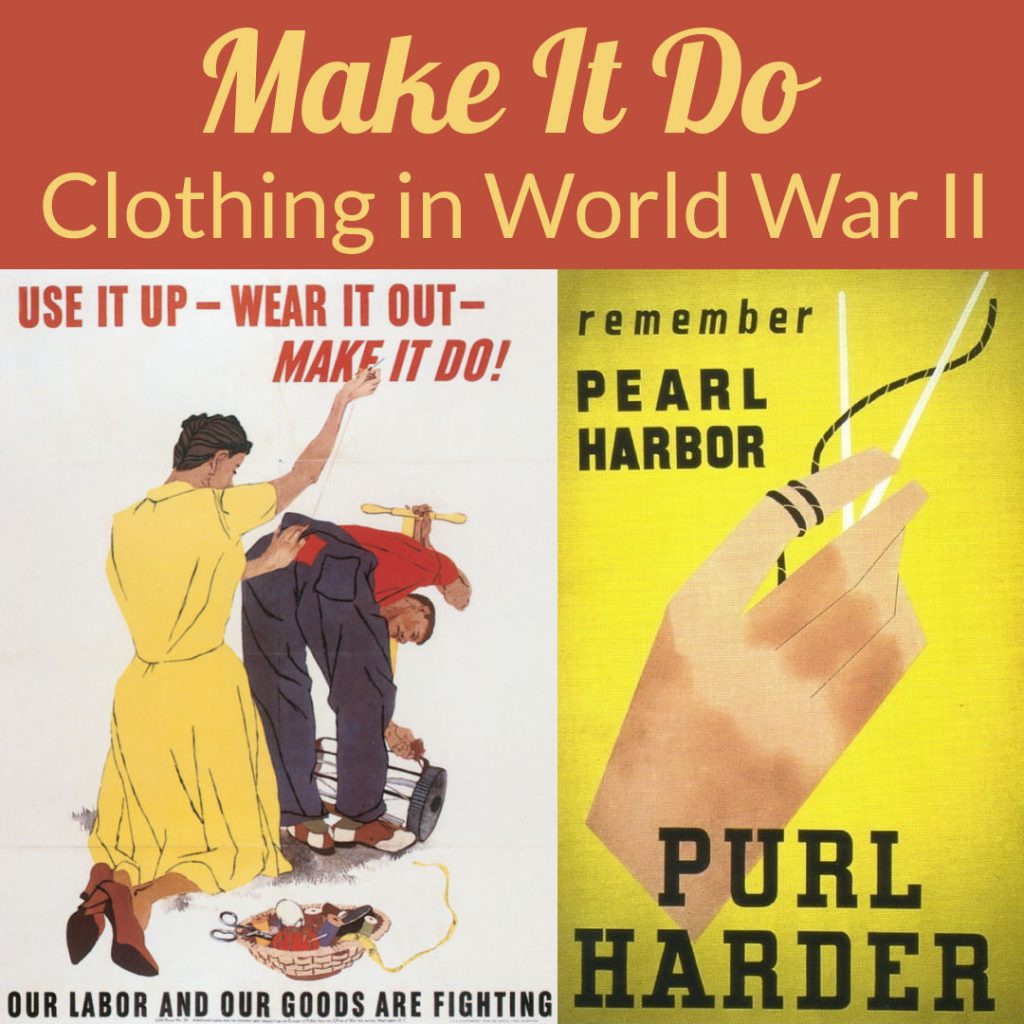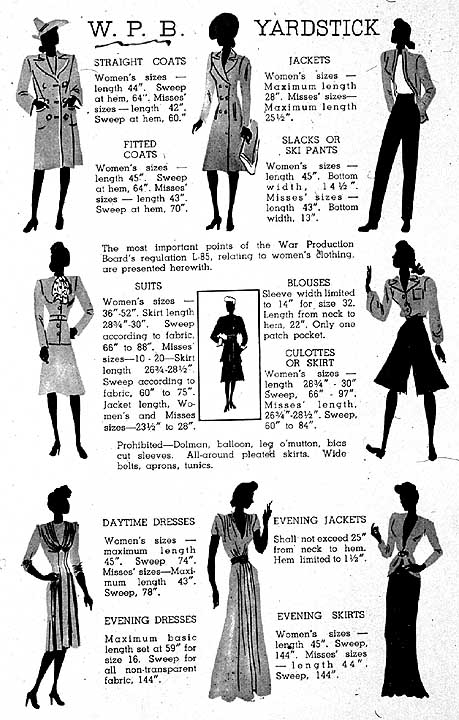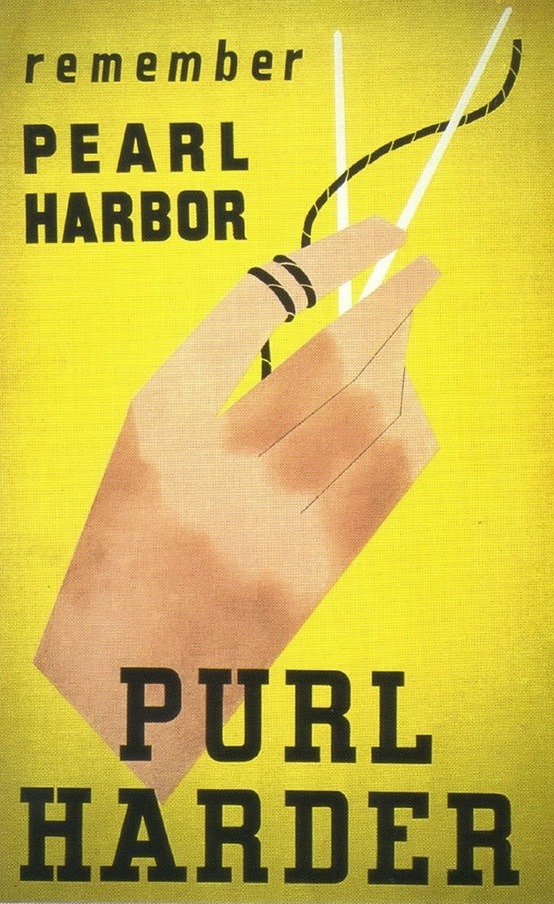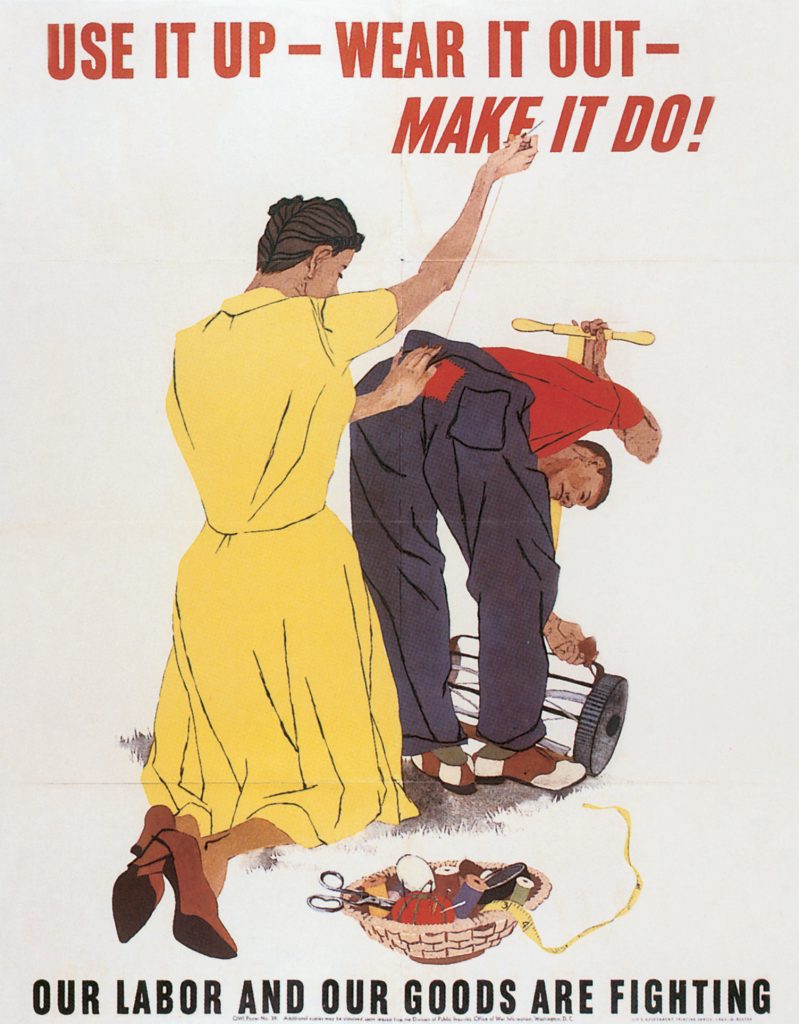Which Fashion Materials Were Cut Off by World War 3

During Earth War II, the United states didn't ration clothing as the United Kingdom and many other nations did, only restrictions were applied, and fashions adapted to apply less textile.
Why Vesture?
Xi million men and women served in the US armed forces during the state of war, and they all needed uniforms. This strained the country'due south supply of fabric, particularly wool, and the garment manufacturing system. Since Nippon produced the majority of the world'south silk, the war cut off the supply completely. Civilians were encouraged to purchase or make habiliment from cotton, rayon, or rayon/wool blends.

Usa "Sew for Victory" poster, World War 2
Wartime Women'southward Fashions
Vesture using less fabric became fashionable. Women'due south suits took on a sleek, armed services look. Suit jackets were fitted, with padded shoulders, and rested betwixt the waist and hip. Skirts rose to knee-length and took on a slim silhouette, oft with an A-line flare. The peasant look was also popular, but without full skirts and ruffles. Likewise, millions of women inbound the workplace popularized the "Rosie the Riveter" look—slacks became stylish, every bit well every bit turbans, snoods, and headscarves to continue pilus away from machinery. Since metal zippers were unavailable, wraparound dresses and skirts were introduced. See my 1940s Fashions Pinterest board for lots of pictures.
Wartime Men's Fashions
Before the war, when a human purchased a suit, it came with a jacket, a belong, and two pairs of trousers. The wartime "Victory Suit" eliminated the vest and second pair of trousers. Men'due south jackets were single-breasted, had narrow lapels, no cuffs, and no pocket flaps. Wartime necessity immune men to wear mismatched jackets and trousers.
State of war Production Board Restrictions

"WPB Yardstick" poster showing War Production Board standards for women's wearable under order Fifty-85, viii March 1942
On March viii, 1942, the US War Product Board (WPB) issued lodge L-85 with the goal of 15 per centum reduction in the corporeality of textiles used in women's article of clothing. Skirt length and width were restricted, as well as the width of women's slacks. The WPB prohibited pleats, ruffles, patch pockets, attached hoods and shawls, and full sleeves or skirts. Hems and fabric belts could be no wider than two inches, and garments could have no more than than ane pocket. Exemptions were allowed for bridal gowns, motherhood clothes, and religious vestments.

US affiche encouraging knitting, WWII
Home sewing and knitting were non restricted and became fifty-fifty more popular. Even so, patterns of the time tended to follow WPB guidelines.
Price Controls
The textile state of affairs worsened in 1944. Manufacturing of noncombatant vesture roughshod 50 percent, and prices began to rise. To prevent rampant inflation, the Office of Cost Administration instituted price controls on clothing on March 19, 1945, which were lifted on August 18, 1945.
Making Do

U.s. affiche urging mending clothes, 1943
Mending was more than economic, it was a patriotic duty, and a fad for patched vesture emerged. Dwelling house sewers often pieced together garments from remnants, mixing and matching colors and patterns. Creative women cut downwards erstwhile garments to reuse the cloth and remade old article of clothing into wartime fashions. Due to the silk shortage, women shared wedding dresses and formalwear. With and so many men off to war, wives were encouraged to remake their husband's suits for their own use, and the old pioneer tradition of cut downward adult clothing for children'due south employ returned.
Shoes and Stockings
During World War 2, the Usa rationed leather shoes (meet Make it Exercise – Shoe Rationing in World War II), and silk and nylon stockings were deficient (see Make it Exercise – Stocking Shortages in World War II).
What do y'all call up of 1940s fashions? Would yous take resented the restrictions or enjoyed the chance to be creative?
0 Response to "Which Fashion Materials Were Cut Off by World War 3"
Post a Comment